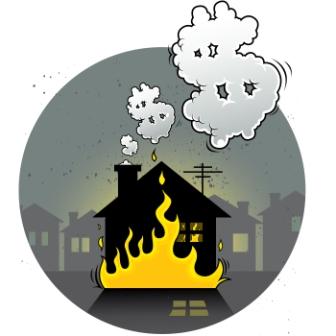 The Second Circuit’s recent remand of Alphonso, No. 11-2364-ag (2d Cir. 2/6/13), rev’g 136 T.C. 247 (2011) allows the Tax Court to consider perhaps the most controversial aspect of casualty loss deductions – the meaning of “sudden, unexpected, or unusual.”
The Second Circuit’s recent remand of Alphonso, No. 11-2364-ag (2d Cir. 2/6/13), rev’g 136 T.C. 247 (2011) allows the Tax Court to consider perhaps the most controversial aspect of casualty loss deductions – the meaning of “sudden, unexpected, or unusual.”
Under Sec. 165(c), deductible personal losses (those not incurred in a trade or business or in a transaction entered into for profit) must arise from “fire, storm, shipwreck, or other casualty, or from theft.” The IRS and courts have generally restricted such other casualties to those like the named instances — identifiable events of a sudden, unexpected, or unusual nature or due to such causes (see, e.g., Matheson, 54 F.2d 537 (2d Cir. 1931)). Generally, courts have held that where the underlying cause of loss is progressive, such as rust and rot, gradual inundation or erosion, or insect infestation, resulting damage or destruction is not a casualty within the meaning of the statute, even when the damage or destruction becomes suddenly apparent. Thus, in Carlson, T.C. Memo. 1981-702, the Tax Court held that the collapse of a well did not qualify as a casualty loss because its cause was progressive deterioration of the supporting timber sidewalls.
In Alphonso, the Tax Court must make a factual determination whether the cause of a retaining wall’s collapse was sudden, unexpected, or unusual. Rev. Rul. 72 592 states that to be considered sudden, the event must be swift and precipitous, not gradual or progressive. An unexpected event is one that is ordinarily unanticipated, occurring Read More






















Recent Comments